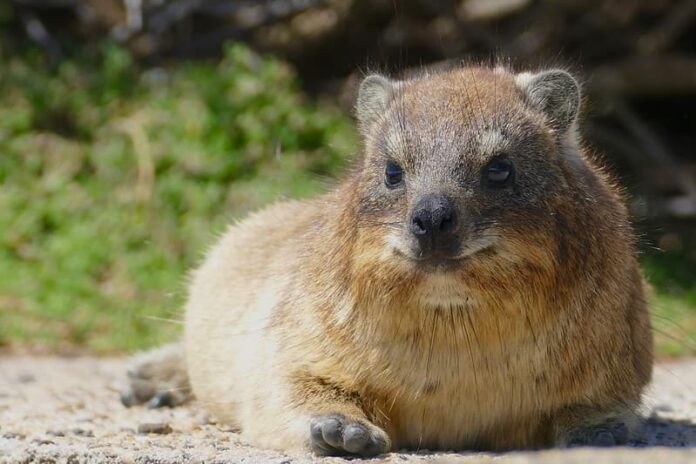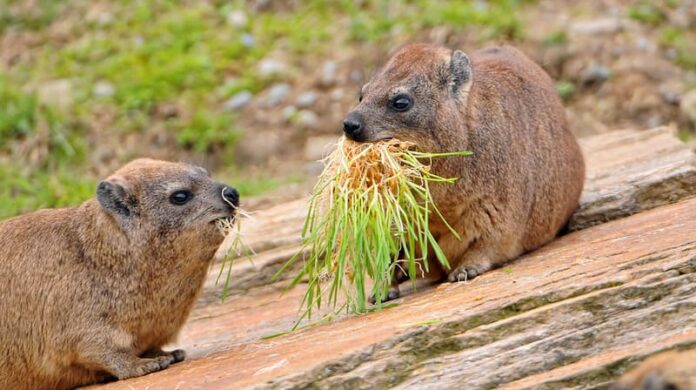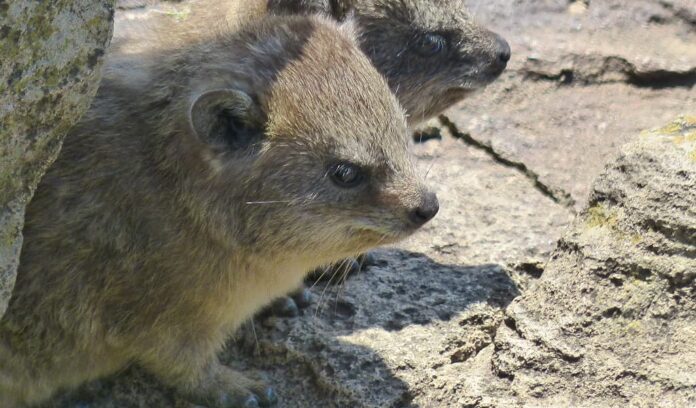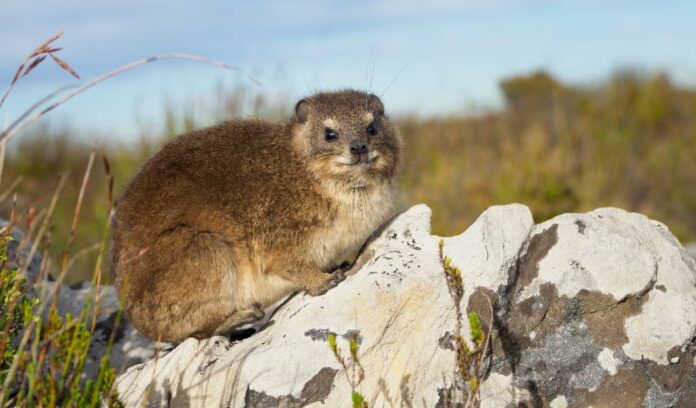Rock hyrax or rock rabbit is a rodent-looking mammal whose origins are unbelievably related to the largest land animals on earth. There are 3 hyrax species, but we are going to talk about the most common one today. This is already starting to get interesting, but there are many more other things about them. In fact, rock hyrax also appears in the Bible but under a different name “Cony” as well. And you are going to know fascinating information about rock hyrax here today with me. Small yet big in some way, so let’s take a look and see some extra facts about this adorable animal below.
1Appearance

The appearance of a rock hyrax makes them look like a rodent, but they are not. Rock hyraxes are mammals whose closest genetic relatives are elephants. A rock hyrax has thick and soft fur that is usually brown or gray in color, but can be slightly yellow. It has short legs with 4 toes on its front feet and 3 on each of the back. These rodent-like animals are tailless, and they have long bodies that are around 18 to 22 inches (44 – 54 centimeters). If you look at a rock hyrax’s eyes, you can see that its iris slightly protrudes over the pupil of its eyes. This unique feature decreases the amount of light to the eyes from above, like a built-in sun visor.
The interesting thing about them is their feet that specialize very particularly for suction on cliff sides and sheer rock faces. More than that, their padded feet also secrete moisture to assist with the grip. All these allow them to be capable of retracting up the center portion of their feet into a concave dome. Despite long hairs over their bodies, rock hyraxes have little control of their body temperate. So they cannot survive without shelter from cold and heat. Their front feet have claws that they use for grooming and scratching tough parts of the hair and skin. Rock hyraxes are the largest in the family, and they also have more rounded heads than the others.
2Behavior

Hyraxes are gregarious, and they live in colonies with up to 80 members or more in total. In the colony, the males keep watch for predators and protect the group from other males. To communicate, hyraxes put together a range of different sounds to create a song. The sounds appear together in a specific order, and only hyraxes in the group can understand those sounds. They are quite adaptable so they don’t really mind the range of climates in the areas that they live in. Because they need the sun to keep warm, you may find them on dry plains sometimes. Things are in great order in the colony, down to the particular spaces that they assign for toilet areas. Rock hyraxes deposit feces and urine under rocky ledges, very neat right?
Rock hyraxes and all hyraxes are fierce biters, and they are not afraid to chomp on enemies. They are active during the day, but communication through calls during moonlit nights is common sometimes. Another fascinating part about them is their long gestation period which is up to around 6 to 8 months. This is long, considering that their size is quite small. However, the babies are strong for the fact that they can walk, run, or even jump an hour after birth. A female rock hyrax gives birth to 2 to 4 young, and they can eat solid food after 2 weeks. More than that, they are also very brave since they show no fear of people. If you are lucky, you might get to take photos of them with their adorable facial expressions.
3Feeding & Habitats

Hyraxes are omnivores, so they feed on fruits, grasses, plants, as well as small critters like birds or lizards. One of their favorite meals is bird’s eggs, so they raid bird nests to find precious food sometimes. A rock hyrax is very cautious when it eats because the predators could be from anywhere. It would eat a mouthful, then stop to quickly survey its surroundings before going back to eating again. Thanks to their wide mouth and sharp teeth, taking quick large bites is not a problem for them. Rock hyraxes often start foraging in the afternoon on sunny days when food is abundant and fresh. They prefer to stay in when the weather is cold or it is a rainy day.
These furry animals are found across Africa and the Middle East where they hang out in rock formations. Sometimes they also wander on cliff faces, in trees, and through bushland as they observe human movement around them. Just like the name suggests, they live in rocky areas, preferably with plenty of open space to bask in the sun. They are also common in rocky outcrops where there is a good variety of vegetation as well as shrubs and trees. A rock hyrax does not dig burrows of its own, it lives in crevices between boulders and rocks instead.
4Predators & Threat

In the wild, their natural predators are eagles, leopards, lions, servals, and other large predators. If the predators are smaller, a rock hyrax will try to intimidate them by biting and snapping at them. However, their biggest predators are humans who hunt them for their thick and soft fur. Apart from those, deforestation is also a threat to their population because it leads to habitat loss. Land clearance for agriculture and human settlements affects greatly their natural habitats. Although the population of rock hyrax is not at risk now, things may change because they are losing their habitats.
Related Post: Things You Don’t Know About Panda Ants




